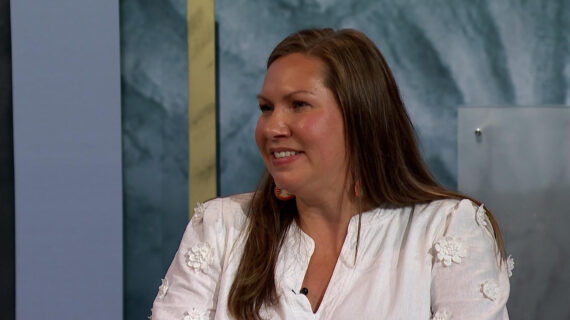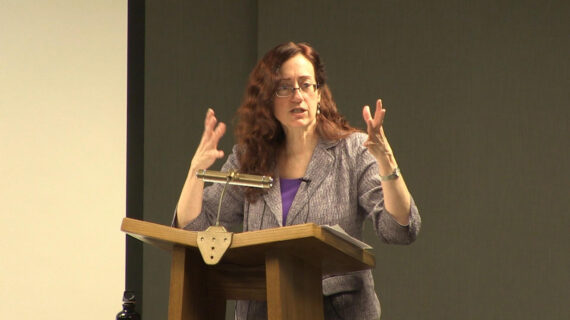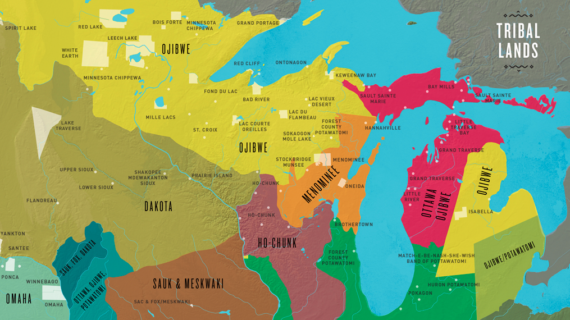– Well good evening and welcome to UW Space Place, this is the second Tuesday of the month and so we have a guest speaker tonight, and I would like to introduce Professor John Sarff, who is in the, he’s a plasma physicist in the UW-Madison Physics department, from which he obtained his PhD. And has many roles, but among them, he was director of the Madison Symmetric Torus, which is a very big and spectacularly visible experiment. If you walk through Chamberlin Hall, you can get a good look at that, where they do research on thermonuclear fusion. And so I’ve invited Professor Sarff to speak to us tonight, and his title is “Taming the Energy of the Stars. ” So help me welcome Professor Sarff. [audience applauding]
– Well, thank you very much, it’s a enormous pleasure to be here tonight to talk to you about fusion. So fusion is sometimes said, by some people, to be the most important process in the universe, for a number of fundamental reasons. And the context here is how do we take the nuclear fusion process, which operates in the center of stars like our Sun, and make it a terrestrial energy source? That, if we could figure out how to do it, would literally solve the energy problems of the world, forever, in a context of millions of years. So I start with this picture of the Sun, you probably recognized it, this is a nice picture obviously taken by an image that’s blocked out most of the light. You can see some dark spots in the middle, these are sunspots.
So this image is in the optical, and this is the thing that we see up in the sky all the time. Deep down in the Sun, there’s fusion happening. And one of the things that, probably the most important thing in some sense, I’d like you to take away tonight, is that solar energy is fusion energy. Solar energy is really fundamental to our existence. We’re here because of solar energy. And solar energy is, first and foremost, the fusion of hydrogen that happens in the middle of the Sun. So the way this happens is through Einstein’s famous relationship, E=mc2, so energy is related to matter. So matter, in the middle of the Sun, is combined to form heavier elements; in this process it yields energy. This particular image is taken in X-rays, which is instruments, this is obviously radiation that your eyes don’t see. What’s great about this, apart from the fact that it’s a nice rotating image, is that you see lots of activity up high in the solar corona.
This is particularly interesting to me, because it’s this part of the Sun that interacts and generates magnetic fields. And a large part of my personal research is involved with understanding how plasmas are affected by, and how the plasma itself can help create magnetic fields. So this is the SOHO data. The presentation itself has two goals: it’s to describe the progress toward fusion energy, which I’ve already said could become the ultimate energy source for the world’s future, and in the process of doing so, I’d like to impress upon you a few basics of plasma physics and its connections beyond fusion energy. That’s the goal here today. So to start right up front, fusion energy has several really, very important advantages from the point of view of being a terrestrial power source. The fuel that’s used for fusion is really abundant. The easiest, I’ll show you this in a few minutes, the easiest reaction, nuclear reaction, that we can do with fusion is to use two isotopes of hydrogen, deuterium and tritium. Deuterium is heavy water, so this is a proton together with a neutron. One part in 6,500 of all of the water molecules in the world has a deuterium in it.
This vast amount of deuterium that’s available in the water on Earth is literally an inexhaustible supply. We could produce power at the rate we are now and at even increased levels, forever or for millions of years. The easiest reaction also uses the second isotope of hydrogen, it’s called tritium, so this is like extra heavy hydrogen. This is a radioactive nucleus, so its natural abundance is low. The way this would happen is to breed it from lithium, the next element up. For this, there’s at least thousands of years’ supply. So in many of your pockets, you’ve got lithium ion batteries. The lithium in your phone represents an energy source which is of vast importance from the point of view of fusion. Fusion produces no carbon dioxide, so there’s no global warming connection associated with it. It also doesn’t produce air pollution, and the ash from burning nuclear fusion is just helium, which we of course breathe every day.
There’s a relative small risk for nuclear accidents. It is a nuclear process, so there’s nuclear risks associated with it, but in particular, there’s no meltdown scenario the way that there is for fission. And there’s a small amount fuel which is stored at a reactor; this is an important safety issue. There’s reduced hazards associated with the long timescale associated with radioactive waste. The primary way in which radioactivity enters into the fusion context is through activation of the structural materials that would be used in building a reactor. Material science could minimize these radioactive effects, so unlike fission, where you’re necessarily needing to use fuel, which has long spent fuel issues, with fusion, we have an opportunity to design around that. So this looks great, so why don’t we have it yet? So here are sort of the big, leading points. We need to make and sustain a gas that is actually hotter than the center of the Sun in order to do this on Earth. This hot gas forms the plasma state of matter. Plasmas have many interesting properties, including the ability to create turbulence, and turbulence is one of the principal ways in which things that are hot can cool themselves.
And so keeping the energy inside the plasma has been one of the big challenges. We need to develop materials that can withstand an environment which would be like sitting next to the surface of the Sun continuously, so that’s a big challenge. The next stage, so there’s been many decades of research on this, and there’s lots of progress, I’ll give you some hint of that. The next big experimental steps in fusion is to produce more fusion power than it takes to create and to sustain the plasma. I’ll show you two ways in which that’s happening. The first thing I want to do though, is talk about how fusion happens in the Sun. One, because it’s so fundamentally important to our existence, but also it gives a context to understand how we do this on Earth. So, as I’ve already said, nuclear fusion converts matter into energy, so this is E=mc2. And in the Sun, the way this happens is by combining protons which is basically just hydrogen, right? So a hydrogen atom is a proton electron. And in so doing, it creates neutrons to form heavier elements.
So the cartoon on the right is an illustration of the layering of the Sun, so deep down in the core, this is where the plasma’s hottest, this is where the fusion is happening. And that energy slowly works its way out to the surface. So the Sun is made up primarily of hydrogen, it’s 73. 5% hydrogen. The diagram on the left shows a proton, which is colored in red with a plus sign to indicate that that’s a proton. The neutron is an n, this is a neutral particle. So the process that happens in the Sun is two hydrogens come together, and there’s a nuclear reaction where one of the protons turns into a neutron. Technically, there are a couple of particles given off, but the key point in this is that one of the protons turns into a neutron. That nucleus which is formed now has a proton and a neutron, that’s the first isotope of hydrogen. That’s called deuterium.
So that’s the first step. There’s an interesting detail here. There’s an intermediate step; you can imagine you’re taking two protons and you’re putting them together. That process itself is endothermic, it takes energy, it doesn’t yield energy. That state, that nucleus, is called the diproton, or we might also call it just plain helium too. The half-life, the main thing that happens when you put two protons together, is that they almost immediately separate again. So they’ll come together for a little bit, but it’s an unstable nucleus, and so it separates. So one way to describe the rarity of the reaction which is shown here, where two protons get close enough together and one of them turns into a neutron, is to say it that the half-life of a proton in the Sun’s core before successful proton-proton fusion is a billion years. So this is one of the things which sets the time scale for which suns and stars burn. So that very fact though, the fact that two protons together mostly just fly apart, means that we can’t use that particular reaction the way, precise way, in which fusion happens in the Sun here on Earth.
We have to do something different than that. So what’s shown here are the primary, well this is still the primary fusion sequence in the Sun. So the two protons come together, they make a deuterium, along comes another proton, that makes a helium three nucleus, that’s got two protons and a neutron. And parallel to this, there’s another such reaction going on, and eventually those two helium threes combine together to form a helium nucleus, and in that process two protons come back out. And in the step, going from left to right, a substantial amount of energy is produced. So the input is on the left, there are six protons, one two three four five six, colored in blue there, on the right, two of them sort of come back, so there’s a net four protons, which combine to form a helium nucleus. Literally the helium nucleus weighs less than the four protons together. So through E=mc2, energy is yielded. That’s how the fusion process works in the Sun. The fusion reactions which are suited for a power reactor on Earth are gonna be on this slide.
The easiest one to do is the deuterium tritium. So the deuterium and the tritium, the deuterium that we have on Earth, that was produced sometime in the past, starting from the Big Bang or through solar evolution, stellar evolution, galactic evolution. The tritium is radioactive, that has to be produced on Earth, so the one on the left, the deuterium, that’s available in sea water. We have a lot of lithium on Earth that we can make to turn into tritium. So the reaction that we’re aiming for first on Earth is to take the deuterium and the tritium to create a helium plus a neutron. And that yields a lot of energy. I’ll give you a sense for how much in a bit here. You can also do terrestrial fusion purely with deuterium. In some sense, this would be an ultimate way to do this, because there’s so much deuterium on Earth that it would literally last forever. So it turns out that there is a branching ratio here of 50/50, two ways that you can do this.
You can put the two deuteriums together, you can create a helium three nucleus, or you can create a tritium nucleus and get a neutron or proton back, depending on which branch it goes through. The other option is deuterium and helium three. Helium three is a stable nucleus, but its abundance on Earth is essentially zero. There is plenty of it on the lunar surface, and there are engineers here at University of Wisconsin who’ve thought about taking mining equipment to the solar surface, mining the helium three, bottling it up, and bringing it back here. The middle row, if we could do deuterium deuterium branches to helium three and tritium, those two nuclei, helium three and tritium, could combine with either of the top and the bottom reactions to completely burn up the deuterium, okay? So how much energy are we talking about? Well here’s a couple, there’s a couple of ways you can quantify this, here’s a visual for this. So this is a comparison of the energy content in gasoline, which is a fossil fuel, based on chemical reactions, versus the energy content that’s represented in the deuterium and water. So on the left is 50 gallons of gasoline count, that energy that’s in that gasoline that we yield by burning it, is equivalent to the deuterium that’s available in a half-liter of water. Keeping in mind that in that water, it’s only one part in 6,500 of the water molecules that contains deuterium, so it’s an even smaller fraction of that. Here’s another way to look at this. The fuel resources for fusion are vastly smaller.
One of the important things about our modern society is not so much that we know how to use energy, it’s that we use a lot of it. So it’s our rate of energy consumption that makes us really special on the planet. So this is power, so we need lots of power. So one way to visualize the difference is that a conventional gigawatt fossil fuel power plant needs 10,000 tons of coal per day. This is a hundred train cars each day, to keep feeding the fire in a big gigawatt power plant. The amount of fuel that’s needed on the fusion per day is one pound of deuterium. So that’s just a fraction of a bottle like that. So that’s the relative huge difference in the energy content that’s available and why deuterium could last forever. So one of the basic physics reasons why this is hard, is that the protons in the Sun, which are merging, or the deuterium and the tritium, they have the same charge. The same electric charge, they’re both positive charges.
And like charges like to repel. So you need to get these two particles close enough together so that the strong nuclear force can suck them together, yield a new nucleus, and that process yielding energy. So the solution to this is you need head-on collisions, and the particles need to have very high energy to overcome that electric repulsion. That translates into high temperature, high energy in this context is high energy. There’s a problem with — oh there’s the next graphic, so sorry, that it was a two-step graphic. So these two particles, there’s a mechanical analogy. It’s like going up a hill, if you can push them up the hill, the nuclear force is like a big well at the top of the hill. Once the two particles get to the top of the hill, they can suck together and stay combined together going down in this well. So that’s what we’ve got to do. This is where plasma enters the problem of fusion.
So let me first just say that plasma is the ionized, gas-like state of matter, and that’s what’s created if you continue to heat a gas. So you’ve all learned about solids, liquids, and gases, have you ever wondered if you continued to add energy to a gas, what happens? Eventually at some point, the average energy of the particles in the gas are so big that you ionize the gas, the electrons come free from the nuclei. That’s the plasma state, so that’s what’s shown here. It’s that enthalpy-like cartoon, so you add energy, you melt to create a liquid, you add more energy, you vaporize to make a gas, if you add more energy, eventually you make a plasma. So plasma is a mixture of what one could say is free electrons, you can think of these as two gases which are intermingling together. Free electrons and the ions which are left behind from ionization, and typically those are in equal numbers. Nature doesn’t really like to have a charge imbalance, so natural plasmas are overall charged neutral. The temperature enters here as a way to measure the average energy of the particle, so the temperature of the core of the Sun, in familiar units, is 27 million degrees. So that’s, from the point of view of energy and thinking about this problem, Fahrenheit is not a very convenient number, because you’re working with millions. There’s a more natural energy unit, it’s called the electronvolt.
And if you took a little bit of chemistry, you might know that the ionization energy for hydrogen is 13. 6 eV. This is just another way to say that it’s really hot. So the eV is a more conventional measure for extreme temperatures. The temperature for a fusion reactor plasma here on Earth must be 10,000 eV, and what’s important about these two numbers is that 10,000 is vastly bigger than 13. 6. So for the particles to stay neutral with that much energy, it’s not possible. So as you try to do fusion, you just automatically create plasmas. So here’s another cartoon that sort of gives a notional sense of what a plasma might look like if you could be microscopic enough to see these particles. One little detail, the eV unit of energy, it’s not a familiar unit.
One eV happens to be equivalent to the energy of a proton dropped from 10 million meters in an imaginary gravity field, of Earth’s gravity field. Or a speed that corresponds to 31,000 miles per hour. So these are really energetic particles that you need. Most of the visible universe is a plasma. This place, the Space Place, is all about looking at the light that we can collect with our eyes, to various instruments. So here’s a beautiful picture from the Hubble Space Telescope, it shows gas clouds, it shows galaxies, it shows individual stars. Most of what we see with light of various sorts comes from a plasma. Plasma is the most common state of matter in the universe. It happens today that the Nobel Prize in Physics was awarded, and one of the people that it was awarded to was for the discovery, or relationship to the discovery of dark energy and dark matter, which you may have heard about. It turns out that there’s more dark energy and dark matter than lighted matter, that’s an important result.
Obviously Nobel-worthy. But in terms of the lighted matter of the universe, it’s all plasma. We happen to live in a relatively cold place here on Earth. Plasmas are around us all the time. So here’s a picture that was put together on purpose to drive this point home. It shows the kitchen in a home, it’s got a plasma TV, it’s got electronic devices, your phones all have memory in them, where plasmas are used to etch the fine features that allow immense amounts of memory to be stuffed inside a phone. So this plasma as an application, as a tool, is something that’s become very important in our daily lives. Sometimes I usually, when I do lectures, I’ll point up to fluorescent lights, they all happen to be off. In this room there are a bunch of plasmas at the back of the room which are on right now, in order to help us with our lighting. Okay, so that’s the plasma, so how do we do fusion then, based on plasma here on Earth? There are basically only three ways to do this.
The first one is spherical inertial. This would be to take a small amount of the deuterium and tritium fuel and to compress it, using beams of particles or lasers. The plasma, because it’s made up of charged particles, is affected by a magnetic field. So a magnetic field can be used as an insulator, so that’s the middle one, toroidal magnetic confinement. That’s thought of as my specialty. There’s also some possibility to affect the nuclear force directly, so this is titled in the slide, “Reactivity Enhancement. ” If there’s a way to, for example, polarize, to spin polarize the nuclei, you can cause the nuclear reaction to be a little bit easier to do. This is important, because this would lower the temperature at which the fusion would happen. So I’m gonna talk a little bit about the two on the left. By the way, gravitational compression is how stars get hot enough in the first place, so that fusion starts to happen.
Fusion doesn’t happen all on its own, you have to make it hot first. Once it’s hot, then it’s sustained. But we can’t do gravity on Earth, because you need a lot of mass. So within the fusion development context, the key next scientific step is to create more fusion energy than it takes to heat and create this plasma. In the spherical inertial fusion context, this is titled “Ignition,” similar to igniting a match; in toroidal magnetic fusion, this is called a “Burning Plasma. ” So the cartoon here just shows a plasma, it’s cast as kind of a sun-like body, just to kind of make the connection that it’s a hot gas, and energy needs to be input to this plasma in order for the fusion to get going. The kinds of ways in which we can put energy into the plasma to make it hot enough so that fusion can happen are listed on the left. So electrical resistance, it’s a conductor like a burner on a stove, we can drive a current in it, this creates heat inside the plasma. We can shine microwaves in, which resonates with the particle motion. We can inject particle beams, we can use intense light.
Ultimately, the goal is to make it hot, have fusion, and have the fusion reaction itself become a self-sustaining reaction. The energy losses are just the standard three: radiation, conduction, and convection, in addition to that neutral particle losses. So we have to overcome those losses with some sort of energy input. So this is the scheme for inertial fusion, where the energy input comes from intense laser or ion beams, which very quickly heat a small amount of plasma to thermonuclear temperature and density. So the cartoon is showing up in the top, you start with a little capsule of fuel, that’s step one. You shine light or particles onto this capsule, you cause it to be smushed, so this is the equivalent of like doing gravity, but with light beams or particle beams. Once it’s dense enough and hot enough, it becomes hot and can fuse, and you get energy yield. So what’s shown in the bottom left is the target for the world’s largest laser, which is located here in the United States at the National Ignition Facility in California. On the fingertip is the fuel capsule, the deuterium tritium fuel capsule that’s used in inertial fusion. That’s put inside a little shell that’s called a hole round, that’s the next picture over, and the cartoon on the right shows laser beams coming from the laser I’m gonna show on the next slide, shining on the inside surface of this hole round.
The optical light is converted to x-ray, and that’s the thing that actually drives the implosion. That’s how it’s done in a laboratory. So here’s the world’s largest laser. It has 102 individual lasers which operate in parallel. This is in a big building, I don’t know if you can see the pictures of a person here, to scale, so this is like a football field-like long facility where the lasers are located. The light from those lasers is shined on this capsule. That experiment takes place inside the target chamber shown on the right. Again, that’s a big crane holding that so you can get the size of the scale. These lasers deliver 1. 8 million joules of energy.
Okay, you may not know what a joule is, it might sound like a big number because it’s millions. Well, it turns out to be about the energy of making 30 pieces of toast. Maybe doesn’t sound so dramatic, but it does it in 25 nano-seconds, so, [laughing] you can make a lot of toast real quickly! And that’s the way this would work. You’d take an individual target capsule, you’d shine it, you’d get energy, and then you’d do this about once every second. Bang bang bang bang bang. Okay, so this experiment in California, fusion energy has been produced from NIF implosions. Unfortunately, it’s far less than was projected before the experiments were performed. So remember there’s 1. 8 million joules of laser light that are coming in. The experiments, the best ones to date have produced 14,000 joules of D-T fusion.
And ignition, if you remember, is defined as fusion energy greater than the total incident energy. So the idea with this, of course, to make it a practical source, is that you need to get more energy yield than it takes to drive. That’s what’s meant by ignition. The cartoon shows what happens in a set of layers where the energy is lost, working its way down to the capsule. In this so-called indirect drive scheme where the light shines on a surface and is converted to x-rays, a lot of the energy is lost. It doesn’t go into the capsule. So only a small piece of this energy coming in, 10-20%, makes it into the capsule. So the 14,000, the experts in the field will say, “You really shouldn’t use the 1. 8 million in joules, “you should use only the energy “which makes it to the capsule to understand “whether or not you’re actually getting fusion. ” And it turns out that there is, there’s a so-called alpha heating in this, in these experiments, so that’s a big step.
But still short of what it takes to make a net energy gain. So I don’t have time to go into detail as to the fundamental reasons why this has always been hard, but I wanted to give an example in each case for inertial fusion and magnetic fusion, of what some of the challenges are. So inertial fusion, one of the fundamental reasons why it’s so hard, is that this target compression must be extremely uniform. As the target is made smaller and smaller and smaller, it can’t get any ripples on the surface. Because if it does so, it leads to things like the Rayleigh-Taylor instability. The Rayleigh-Taylor instability, you may not know the name, but you’re familiar with it. This is putting a heavy fluid on a light fluid. And if you perturb the surface, the heavy fluid wants to sink down below. In this context, the laser energy is like the heavy fluid. And the plasma is like the light fluid.
And so if you get this kind of instabilities, you get a mixing, and therefore the energy is dissipated and you don’t concentrate it anymore. By studying this process, to obtain fusion energy here on Earth, like on the left, it helps us understand things in nature which are similar. Here’s a picture on the right of the Crab Nebula, which is the result of a supernova explosion. As part of that process, these kinds of instabilities like the Rayleigh-Taylor instability, leads to this filamentation. So this physics connection is something that the science community that does fusion research and plasma research builds on all the time. We’re trying to get fusion, but in the process of doing that, develop models which help us understand things like the Crab Nebula. Okay, so I’m gonna turn now to the other way to approach fusion, and this is by using magnetic fields to insulate the plasma. So the plasma is made up, again, of charged particles, so the electrons and the ions. When you put charged particles in a strong magnetic field, what they want to do is spiral, gyrate, around the magnetic field lines. So the cartoon shows, off to the upper left, just the normal plasma state, where electrons and ions are whizzing around in every which way.
If you put a magnetic field in the plasma, it’s like putting beads on a wire. The charged particles now want to start circulating around the magnetic field lines of force. So if you’re very careful about how you organize the magnetic field, you can steer the plasma, and in particular you can keep it from hitting something in the cold surroundings, and this is the way in which we keep it hot. The detail on the bottom is just the way in which this happens, this is the Lorentz force, so there’s force due to the motion of the charged particle in the magnetic field, which is like a centripetal force. Like gravity, which keeps us in orbit. There’s an analogy here. The magnetic field that’s required for a fusion reactor in order for this to work, needs to be at least 10,000 times stronger than the Earth’s magnetic field. So a big part of the technical challenge associated with magnetic fusion, is how do we make magnets which are strong, stable, etc. So if you have this plasma which is magnetized and the particles are slipping along like beads on a wire, you still have to confine them in some space. And the most successful scheme to do this so far is to take the plasma and bend it into a torus, a donut shape, because this is endless.
If it had the field lines going round and round and round, then the plasma’s just, particles just circulate around with it. This is why we use this particular geometry. So on the left shows the electromagnets, which are used to create the strong magnetic field, and on the right, the other key ingredient for this is the heating method. So I’ll make heating, again, this is the current in the plasma that can dissipate energy, we can inject radio frequency, like microwaves, the same frequencies you use in your microwave at home. That oven turned out to work pretty well. We can also inject beams of particles, like neutral beams. That’s the way you make the plasma hot. Here at UW, we’ve had a long-standing program to study plasmas, which are confined in toroidal devices like this. So there are three pictures here, the one on the upper left is the MST device, this is the one that I worked with for my career, so it’s about one and a half meter major radius to give some scale. We also have two other devices, one is called HSX, we give these things acronyms as you can imagine.
That one’s located in the Department of Electrical and Computer Engineering, and another one in Engineering Physics. By specifically adjusting, tailoring the shape of the magnetic field, you affect the way in which the plasma interacts with the magnetic field. And you end up with different schemes. And we give these things names, tokamak accelerator, et cetera. The point here being that they’re all tori, and that they’re all able to make and confine plasmas. The one in MST, if you remember this unit, eV, so in MST we can get up plasma temperatures up to about 2,000 eV, this is about 1/5 short of what you would need to do for terrestrial fusion, just to get some idea of the scale in which we do these experiments here. So here’s another connection that I wanna build between the terrestrial fusion problem and understanding plasmas in the universe. The Earth’s magnetic field, for example, the Earth’s got a molten core, which has got a dynamo, which is creating a magnetic field. Plasma is created in the Sun, and it streams toward us as solar wind. When that plasma stream hits the Earth, it gets trapped in the Earth’s magnetic field in exactly the same way that we try to do this to make a hot plasma for fusion on Earth.
So you know this as the northern lights, the aurora borealis. The plasma coming from the sun gets trapped in the Earth’s magnetic field, it follows the magnetic field lines into the atmosphere, both poles, lights up the atmosphere, and that’s what we see. The picture that I showed, the second picture I showed earlier from the SOHO showed this x-ray image. This is another x-ray image of the solar atmosphere. This one is really beautiful, this one comes from the TRACE satellite. This is showing like iron filings, the plasma is like an iron filing experiment where it’s lighting up the magnetic field lines, individual field lines, so you can see the structure of the magnetic field, which has been produced in the corona of the Sun. So again, by studying magnetized plasmas from the point of view of fusion, we’re gaining a better understanding of that basic interaction to understand things like the solar corona. Okay, back to the terrestrial fusion problem, devices which we call tokamaks, it’s a particular magnetic configuration, have been used to confine plasmas that are at fusion conditions here on Earth, and indeed have produced up to date, up to 50 megawatts of fusion power. So this is a cartoon drawing on the left and an inside picture on the right, of the DIII-D facility, this is located at General Atomics in San Diego, there’s a person to scale. It looks like this more basic cartoon I showed earlier.
There’s electromagnets, there’s obviously a chamber, the plasmas are operated at rarefied pressure relative to neutral pressure in the atmosphere, so they’re evacuated and you inject a little bit of working gas. But their pressures become very high because we make them hot. So that’s the cartoon on the left and then on the right, you see what the typical inside surface of one of these toroidal experiments looks like. The name tokamak by the way, is Russian, which stands for “tokamak chamber with magnetic coils. ” The Russians invented the tokamak concepts. Over time, starting in the late ’50s, when this research was declassified, it originally started as classified research, it’s a worldwide effort, the quality of confinement has increased by about a factor of a million, kind of depends on what metrics you use. And this is a chart that demonstrates this. The chart shows the plasma temperature. Remember, we need to get temperatures up to about 10,000 electronvolts, and they also need to be dense enough so that you get enough reactions that you get fusion power. And the energy needs to stay contained inside the plasma.
So these three numbers together form an important way for us to measure progress. So the product of the plasma’s density and energy confinement time, that’s what’s plotted on the left versus temperature. And the circles represent different experiments over the years. Starting at the bottom corner, 1958 in Russia, tokamaks in the ’80s, et cetera, up to present day. And up in the right hand corner is the target where we want to have a power plant. And the last experiments that we’ve been doing are just a little bit away on this logarithmic plot. So here’s a plot of the data of the maximum fusion power created in a laboratory to date. It was done in the joint European torus. This is a big tokamak experiment located in England. We had a similar experiment here in the United States, which was called TFTR, it was located in Princeton Plasma Physics Laboratory.
The JET devices shown on the right, I don’t know if you can see the little person. You can see how big these things, there’s a person. Okay, this thing’s enormous, right. And there’s a hall there. What’s plotted versus time in seconds is fusion power on the vertical scale of megawatts. So fusion power can happen, this is a demonstration that it can happen. Making it sustained and making enough so that we get net energy back, that’s the next big step. An analogy, just showing you some hint of the underlying challenges within the plasma for what’s going on, so I talked about the Rayleigh-Taylor instability and the mixing that causes, there’s a similar kind of thing that happens in magnetized plasma. Here’s a visualization of this, as this actually comes from a computational model, it’s very difficult to take pictures like this with this kind of resolution in a real plasma. Notice that as you go around the torus, you see lines.
This is basically the plasma following along lines. If you slice the torus in this plane, the red and the blue represent variations in the plasma density or temperature. If you looked at these in real time, you’d see the plasma rolling, so these are eddies which are created by just trying to concentrate so much energy inside the plasma. The fact that these eddies are happening is how the heat is coming back out. We heat the middle of this, they get attached to one of these eddies, and from eddy to eddy the heat can transport out. So fighting this particular problem has been the foremost challenge in magnetic confinement. This has come a long way, we’ve learned a lot about how to make these eddies smaller. And a lot of people think that the basic transport process is solved at this point. The next big step in magnetic confinement is the ITER tokamak, whose goal is to demonstrate this burning plasma state. So the scientific goal is fusion power 10 times larger than the power that it takes to heat the plasma.
This is a worldwide effort, China, Europe, India, Japan, Korea, Russia, and the United States are all partners in this. Here’s a picture of the device again, you can see there’s a person down here. This is about twice the size of the JET. The first plasma for this device is scheduled to be in 2025, and the experiment where it would fuse deuterium and tritium and create 500 megawatts of power instead of 15 megawatts of fusion power, now 500 megawatts of fusion power, is scheduled for 2035. The pulse length for ITER is 500 seconds. It’s still not a steady state device. It’s still an experiment to study this burning state of plasma. So the total energy that comes out in one pulse is 200,000 megajoules. So to put this in units of toast, that’s three million pieces of toast. That’s about what’s needed for breakfast in New York City.
So I picked a picture of a diner in New York City just to give you a sense of this. So this kind of gives you some relative scale. Magnetic fusion, by most people’s judgment, is closer to making an actual practical energy source, even though it’s still at an experimental level. Here is a picture of ITER, it’s located in a really nice place in the world, in the south of France. This is bit dated, this is January, this is a little bit over a year ago, it’s a little bit further along now, but you can sort of make out some clear things. You can for example, see the obvious place where the torus will be located, and they put a giant picture on the building in the background there to indicate sort of the scale. So this thing is slowly growing as parts are coming in from around the world. It’s quite interesting, it’s an international project, and so nobody will really ever know the cost, because the countries are contributing so-called in kind. Different countries have promised to build and contribute to this thing, and the cost for that depends on which country you’re in. So the United States has agreed that we’re gonna support some parts of this, and they’re all getting shipped there and it’s getting built up.
So the fact that we don’t have a working experiment yet, that really demonstrates that energy gain, hasn’t stopped us from thinking about what this might look like in terms of its practicality in an energy generating context. So we study pretty routinely, because there’s a strong feedback from understanding what a eventual reactor would look like and the kinds of things that we do in the laboratory. So this is a picture of a conceptual fusion reactor. Conceptual, there’s no operating fusion reactor, sadly. And you can of course go through the engineering design and make a projection of what the cost of electricity would be. So it turns out that fusion can be fairly reasonably cost-effective. So in this particular study, it was estimated that the cost would be five cents per kilowatt hour. MG&E charges 14 cents, but that includes various other overhead, but that just to give you some idea of what the scale would be. Again, you can sort of see a person here. So the reactor, we believe, would be on the order of the ITER scale.
Here’s an important graph for me personally, I wouldn’t say disappointing, I wouldn’t say discouraging, but it demonstrates the scientific challenge that fusion has been. So this is plotting fusion yield to date by the various schemes. So the red line in the top is magnetic fusion, the blue line is inertial fusion, so the plot going vertically is the fusion energy in joules per pulse, and the bottom scale, it’s years starting from 1970 to 2020, so that’s 50 years. So over time, different experiments were conducted. This particular graph was made in 1997. What’s important about it was right before, in the midst of the planning and building for NIF and ITER. So the dotted lines, here, let’s start with inertial fusion, the experiment that was used to project NIF performance was this experiment called Omega DT. So NIF was supposed to operate up here, it was supposed to get ignition. So far the best is here, so we want to be vertical on this graph. And it’s not vertical because of the various plasma instabilities and whatnot.
ITER, this is nevertheless a solid line, so we have a new data point here. ITER was a dotted line that was projected. There’s nothing different about the projection in ITER except that it’s delayed. So there’s a lot of confidence that ITER can achieve its mission, it’s just taking a lot longer to get there and build it than we’d hoped for. ITER was originated from an agreement between Reagan and Gorbachev, to give you some kind of time scale here. So you look at something as big as ITER, or you look at a data set like that, and you may get a little bit discouraged, and the people who do fusion research see that as well. There’s some really interesting new technologies which are in development, that are encouraging people to think that fusion could happen faster and cheaper. So here’s an example of this, based on advanced superconductors, high temperature superconductors, which are important, not mostly because they operate at high temperature, but ’cause they can get to a much higher magnetic field. In magnetic fusion, magnetic field is everything, because that relates to how small you can make the plasma. So this shows a conceptual design for something called the ARC reactor.
The fusion power in this device would be similar to ITER, 500 megawatts, but it would actually produce 250 megawatts thermal of net electric power. That would be a big step. And the thing which is considered to be the most enabling for this approach, is that the magnetic field strength could be 23 tesla. So that’s twice as big as ITER, and also by the way, about twice the field strength on a strong pole phase, so a really powerful laboratory magnet. So there’s a new private company which has spun off from research at MIT called Commonwealth Fusion Systems, which is working on this. Their first step is to build these magnets, demonstrate that they can be done. Here’s another example, and in fact there’s, to date, about 10, and it seems to be every year a growing number of private fusion companies, which are being supported primarily by private capital investment, hoping to achieve fusion reactors faster and cheaper. So this is a version for a company, TAE Technologies in California, and why I picked this one is to show a different geometry. So the toroidal geometry is the one which has been most successful, but these kinds of linear geometries are also studied. So in this case, the plasma is fired in from the ends, meets in the middle, and creates this ball of plasma in the middle.
They’re actually trying to use a really challenging reaction, P boron 11, Proton boron 11, which would not produce any neutrons. It would be aneutronic. So from a reactivity point of view, that would be better. Okay, so that’s it! In my tour of fusion, the next major steps are to establish the scientific feasibility for burning plasma conditions. People always ask, “When is fusion gonna happen?” Well, it depends on many factors, and I think an honest assessment is mid-century at this point would be possible, but there has to be enough willpower for this. You know, here in the United States, energy from fossil fuel is still plentiful, and the need for alternative energy is not yet reached a critical threshold where things like global warming have fundamentally changed what’s going on in the energy scene, what’s happening with renewables, like MG&E, they’ve got the 2030 where they want to have 30% of their electric power by renewables. The main reason that that’s happening is photovoltaics and wind is cheap. It’s cheaper than coal now. The cost of burning coal is gotten quite high. Natural gas from fracking is still low cost, but renewables are coming on because it’s cheap.
But mid-century would be possible, and I hope I impressed upon you that plasma physics is a diverse subject, and it’s historically been driven by fusion research, but it has expanding connections to the basic science, the way the universe works. And many practical applications which I didn’t illustrate at all, so, thanks. [audience applauding]
Search University Place Episodes
Related Stories from PBS Wisconsin's Blog

Donate to sign up. Activate and sign in to Passport. It's that easy to help PBS Wisconsin serve your community through media that educates, inspires, and entertains.
Make your membership gift today
Only for new users: Activate Passport using your code or email address
Already a member?
Look up my account
Need some help? Go to FAQ or visit PBS Passport Help
Need help accessing PBS Wisconsin anywhere?

Online Access | Platform & Device Access | Cable or Satellite Access | Over-The-Air Access
Visit Access Guide
Need help accessing PBS Wisconsin anywhere?

Visit Our
Live TV Access Guide
Online AccessPlatform & Device Access
Cable or Satellite Access
Over-The-Air Access
Visit Access Guide
 Passport
Passport


















Follow Us